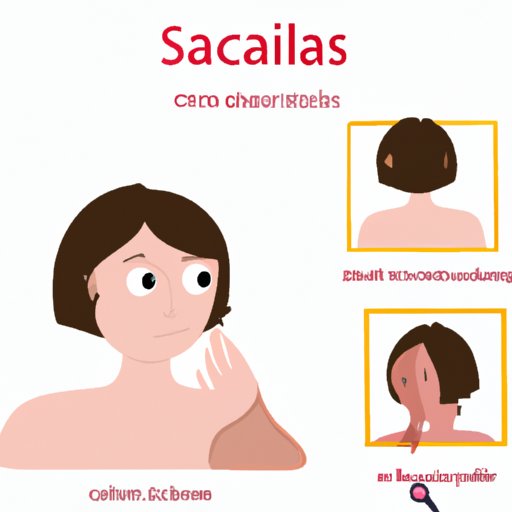
Introduction
Scabies is a contagious skin condition caused by a tiny mite called Sarcoptes scabiei. These microscopic mites burrow into the skin, causing intense itching and a red, bumpy rash. Scabies is spread through prolonged skin-to-skin contact with an infected person, making it common among people living in close quarters such as nursing homes, prisons, and student dormitories. In this article, we explore whether or not scabies can be seen with the naked eye and provide a visual guide to help you detect and prevent this common skin problem.
The Truth About Scabies: Can You Really See Them?
Scabies mites are incredibly small, measuring around 0.2 to 0.4 millimeters in length. Their compact size makes it difficult to see them with the naked eye, which is why detection often requires a magnifying glass. The mites themselves are mostly transparent, making them hard to spot against the skin. However, their burrows can be seen as raised, grayish-white lines on the skin’s surface.
10 Signs You Might Have Scabies: Visual Clues to Watch For
The most common symptoms of scabies include intense itching, a bumpy rash, and small blisters or bumps on the skin. Itching is often worst at night and in areas of the body where the mites are concentrated, such as the webs of the fingers, wrists, elbows, armpits, and groin area. In severe cases, the rash can spread to cover the entire body.

Scabies versus Other Skin Conditions: A Visual Guide
It can be easy to mistake scabies for other skin conditions such as eczema, psoriasis, or dermatitis. However, there are some key differences in appearance that can help you distinguish between scabies and other conditions. For example, scabies tends to create small bumps and blisters that are grouped close together on the skin, while eczema creates thick, scaly patches of skin. A doctor or dermatologist can help you identify the cause of your skin problems and recommend appropriate treatment.

Hidden Dangers: What Can Happen If You Ignore Scabies
While scabies itself is not typically dangerous, it can lead to complications if left untreated. The constant scratching that comes with scabies can break the skin and lead to secondary bacterial infections such as impetigo or cellulitis. In rare cases, untreated scabies can even lead to a more severe condition called crusted scabies, which involves widespread infestation of the skin and can be life-threatening in people with weakened immune systems.
The Top 5 Myths About Scabies, Debunked
There are many myths and misconceptions about scabies that can lead to confusion or even unnecessary treatments. For example, some people believe that scabies is caused by poor hygiene, but in reality, it can affect anyone regardless of how clean they are. Other common myths include the idea that scabies is only spread through sexual contact or that it can be treated with over-the-counter creams. In reality, scabies treatment requires prescription medication and close attention to hygiene practices to avoid re-infestation.
What Doctors Wish You Knew About Scabies: A Visual Guide
Medical professionals can provide valuable advice and insight into how to detect and prevent scabies. In an interview with doctors and dermatologists, they dispel common myths and answer common questions about scabies. By seeing visual aids and pictures and hearing the perspectives of experts, you can learn how to properly diagnose and treat scabies.
Conclusion
Scabies can be a frustrating and uncomfortable skin condition, but it is treatable and preventable with proper medical care. By learning how to detect scabies using visual symptoms and understanding the potential complications of leaving this condition untreated, you can take steps to protect your skin and overall health. Seek medical attention if you suspect you have scabies and follow your doctor’s recommended treatment plan to minimize the risk of reinfestation.




